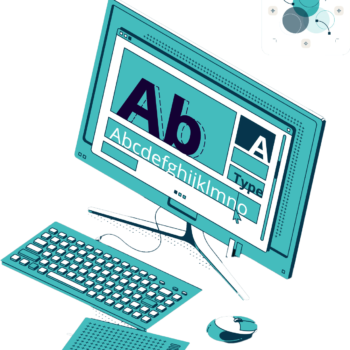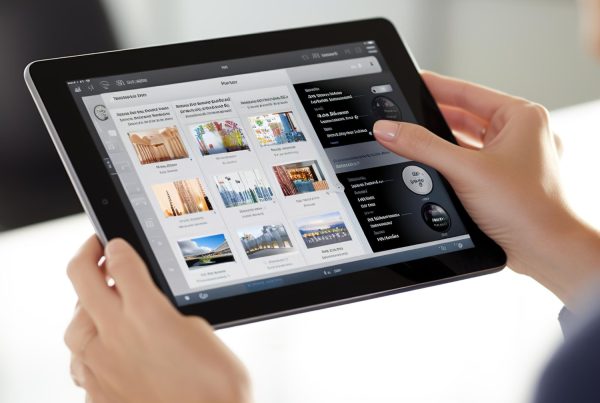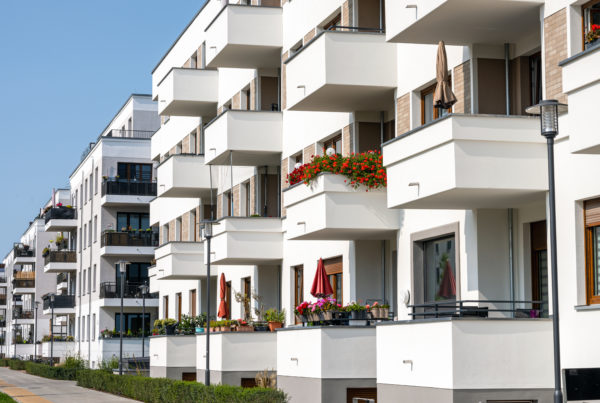User Experience (UX) shapes how guests interact with your site from the first click to the final booking confirmation. Great UX, especially in the context of hospitality website design, blends functionality with aesthetics, ensuring that every part of the hotel booking process is intuitive, accessible, and engaging.
The link between superior UX and increased booking rates is clear. Websites that prioritise user-friendly design see higher engagement levels, lower bounce rates, and a significant boost in conversions. When guests feel confident and in control, they’re more likely to commit to a booking.
But what is user experience, and why is it particularly important in the realm of hospitality website design?
User experience, or UX, refers to the overall feel and functionality of your website from the user’s perspective. UX boils down to a few key elements – usability, accessibility, efficiency, and, of course, aesthetics.
-
Usability
This is how easy it is for visitors to navigate your site. Can they find the information they need without clicking around aimlessly? There should be a clear logical layout in your website, where everything feels natural and your guests aren’t fumbling around lost.
-
Accessibility
Think of your site’s accessibility as having wheelchair ramps or braille in public spaces. Keeping your site accessible ensures that everyone, including people with disabilities, can access and use your site effectively. This includes adding features like text-to-speech, alternative text for images, and ensuring your website works with screen readers.
-
Efficiency
This relates to how quickly and effectively a user can complete their intended tasks. Does your website load quickly? Are the booking forms straightforward? Efficient design is what helps users get from point A to point B without unnecessary detours.
-
Aesthetics
Last but not least, a visually appealing website can draw users in and make the experience enjoyable. This includes using attractive color schemes, readable fonts, and high-quality images that reflect the high standards of your accommodation.
Who are your users and what do they need?

The first step in hospitality website design is knowing who’s checking in. Your guests might range from leisure travellers dreaming of a peaceful getaway to business travellers in need of a quick and efficient booking process. Each type of visitor will have their own needs and expectations.
Take leisure travellers for instance. They want to picture their vacation as they click so, they might look for engaging visuals and easy navigation to explore accommodations.
Business travellers, on the other hand, value speed above all. They need to find suitable accommodation with essentials like WiFi and conference rooms, book a room, and move on with their day as soon as possible. Your hospitality website design must cater to all these different expectations.
So, now that we understand the importance of good UX and who our users are, how can this knowledge be applied to your website’s design? Let’s break down a few strategies that can be used to elevate your guests’ online experience.
The magic of personalisation
Personalising your website can go so much further than throwing up a “Welcome back, [Name]!”.
Ever walked into a hotel and been greeted by name and handed your favourite drink? Now, apply that to your website to make users feel welcome from the very first interaction with your brand.
By integrating tailored content based on past interactions and preferences, your site can become a personalised digital concierge for every user.
This could be as simple as recommending tailored rooms based on previous stays. Or if a visitor checked out spa services, you can flaunt your latest offers on spa packages. This kind of mind-reading magic increases engagement and can spike up booking rates by making irresistible offers that are hard to ignore.
Simplify your booking process

Nothing kills the thrill of an impending getaway like a booking process that feels like a tax return. To keep the user’s adrenaline pumping all the way to the confirmation screen, you have to minimise the clicks required to seal the deal.
This can be achieved by analysing each step of your booking process for redundancies and ensuring that users never have to input the same information twice. Strategies like merging unnecessary pages, or guiding the user with clear, visual steps can turn a tedious process into more of a breeze.
Optimising forms also plays a big part in this streamlined experience. Long, complicated forms can scare off potential customers. To avoid this, autofill wherever possible, and ask only for essential information. This not only speeds up the process but also reduces the cognitive load on your users.
Build trust through UX
Trust is the cornerstone of any relationship, because when users feel secure, they’re more likely to book with confidence. And having robust security features are your first line of defense in building a trustworthy online presence.
By integrating strong SSL certificates, secure payment gateways, and data encryption, you signal to guests that their personal and payment information is safe. This not only enhances trust but also cements your website’s reputation as a reliable place to book their stay.
Trust is also built through transparency and support. Transparent cancellation policies, visible terms of service, and an easily navigable FAQ section can significantly reduce booking anxieties.
Moreover, providing multiple contact points like a support hotline, chatbots, or email access assures your guests help is readily available whenever they need it. This proactive approach in customer care can go a long way in making guests feel valued and cared for, leading to higher satisfaction and repeat bookings.
Never stop learning
Savvy hospitality businesses use analytics to stay ahead. Every click, scroll, and tap tells a story about what your potential guests want and need. By regularly analysing this feedback, you can identify trends and pain points.
Which pages do they linger on? Where do they bounce? This data paints a clear picture of user behaviour, spotlighting areas where your website excels and where it could do better.
Also, A/B testing takes this a step further. This technique involves experimenting with two different versions of a page or feature to see which performs better.
A/B testing provides concrete evidence about what works best on your site — whether it’s testing different calls to action, modifying a booking form, or changing the layout of reviews. And continuous A/B testing ensures your hospitality website design remains aligned with evolving user expectations.
Stay updated. Stay ahead!
And there you have it – your crash course in transforming guest experiences through stellar UX. But, don’t let the journey end here. Your website should grow, adapt and evolve constantly, just like your business. If you leave your website to stale, you might find your guests checking out before they even check in!
Need a fresh pair of eyes on your site’s UX? Give us a shout! We’re here to help you streamline, refine, and optimise your hospitality website design, ensuring it’s always ready to meet (and greet) your next guest.
Subscribe to our newsletter and be sure to read our blog post next week to learn the next steps to successfully introducing AI into your content production strategy!

Boost Your Bookings; Enhance Your UX Today!
We’ll Design Your Website So You Can Stay Ahead of the Competition.







